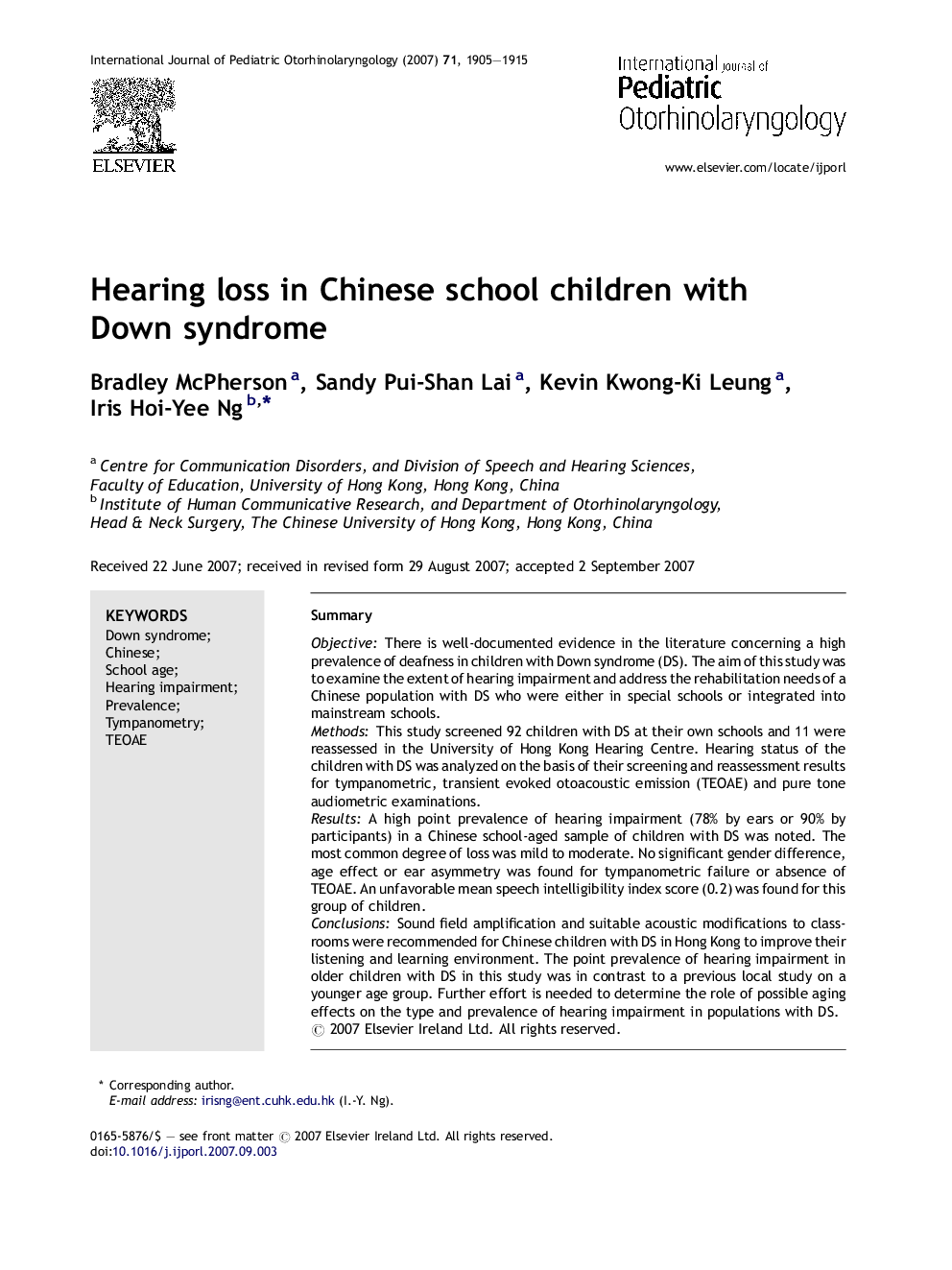| Article ID | Journal | Published Year | Pages | File Type |
|---|---|---|---|---|
| 4115606 | International Journal of Pediatric Otorhinolaryngology | 2007 | 11 Pages |
SummaryObjectiveThere is well-documented evidence in the literature concerning a high prevalence of deafness in children with Down syndrome (DS). The aim of this study was to examine the extent of hearing impairment and address the rehabilitation needs of a Chinese population with DS who were either in special schools or integrated into mainstream schools.MethodsThis study screened 92 children with DS at their own schools and 11 were reassessed in the University of Hong Kong Hearing Centre. Hearing status of the children with DS was analyzed on the basis of their screening and reassessment results for tympanometric, transient evoked otoacoustic emission (TEOAE) and pure tone audiometric examinations.ResultsA high point prevalence of hearing impairment (78% by ears or 90% by participants) in a Chinese school-aged sample of children with DS was noted. The most common degree of loss was mild to moderate. No significant gender difference, age effect or ear asymmetry was found for tympanometric failure or absence of TEOAE. An unfavorable mean speech intelligibility index score (0.2) was found for this group of children.ConclusionsSound field amplification and suitable acoustic modifications to classrooms were recommended for Chinese children with DS in Hong Kong to improve their listening and learning environment. The point prevalence of hearing impairment in older children with DS in this study was in contrast to a previous local study on a younger age group. Further effort is needed to determine the role of possible aging effects on the type and prevalence of hearing impairment in populations with DS.
